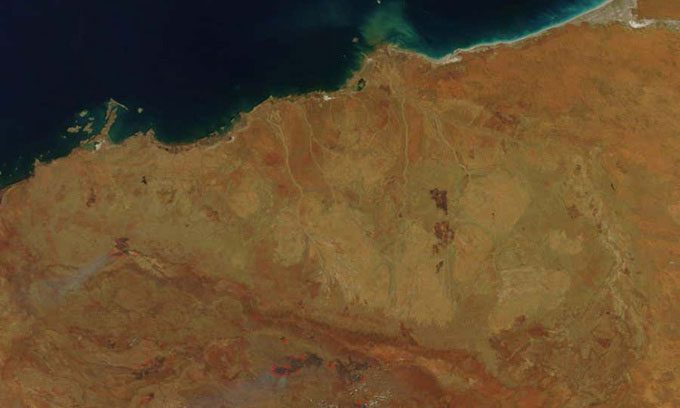Scientists have discovered stone spheres dating back 3.48 billion years, formed when a meteorite struck the Earth.

Evidence of the oldest meteorite impact found in a group of volcanic and sedimentary rocks in Western Australia. (Photo: Alamy).
Professor Christian Köberl from the University of Vienna, Austria, along with colleagues, may have discovered the oldest evidence of a meteorite impact on Earth. The research findings were presented at the 2023 Planetary and Lunar Science Conference held in Texas, USA, from March 13 to 17.
Within the 3.48 billion-year-old Dresser Formation in Western Australia, the team found structures consistent with an extraterrestrial impact. These are stone spheres (spherules) whose structure and chemical composition suggest that the extraterrestrial hypothesis may be correct.
Finding evidence of ancient meteorite impacts on Earth is not straightforward. Tectonic plate movements and erosion have erased much of the evidence of events that shaped the early history of our planet. The oldest recorded impact crater is Yarrabubba in Western Australia, which dates back 2.23 billion years.
However, there are areas on Earth with older rocks. Therefore, researchers are also looking for indirect evidence of meteorite impacts—such as stone spheres. These spheres can form in several ways, one of which is when a meteorite strikes the Earth, causing molten rock to be ejected and solidify into small masses.
To determine whether the spheres in the Dresser Formation originated from a meteorite impact, Köberl and his colleagues utilized a range of advanced techniques to analyze their structure and chemical composition. “Extraterrestrial components make up the majority of the composition of these spheres,” he stated.
These components include a large amount of iridium, some isotopes of osmium, and nickel-chromium spinel. They also exhibit characteristic teardrop or blob shapes with numerous bubbles inside. These are common features of meteorite spherules due to the way they solidify after impact. The newly discovered stone spheres are quite similar to slightly smaller ones previously found in Australia and South Africa.
The search for ancient meteorite impacts is crucial as it helps experts reconstruct the history of Earth. The conditions on Earth during its early days depended heavily on the number of meteorite impacts. The team is working to study additional rock samples containing meteorite spheres to gain further insights into the ancient impact, thereby enhancing our understanding of the early history of the blue planet.


















































